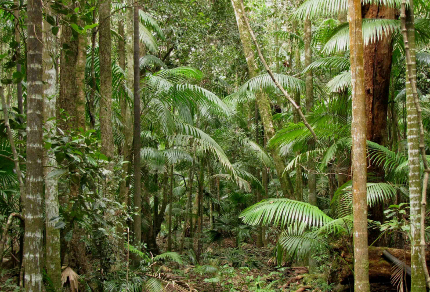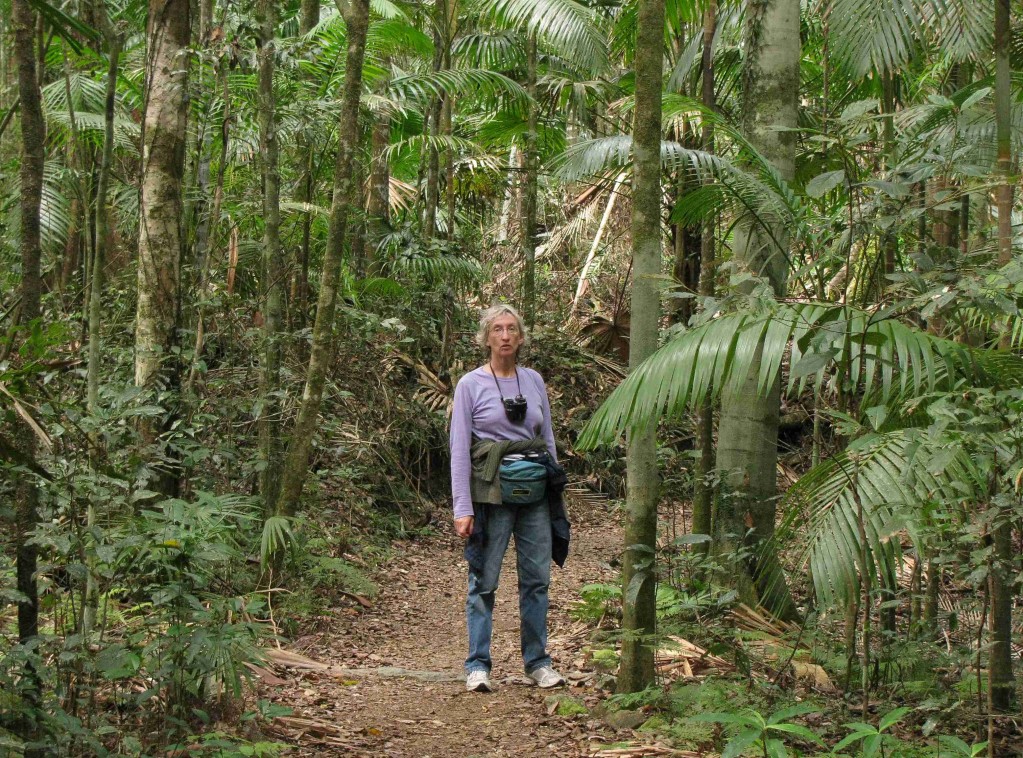
Here I am in the rainforest at Broken River, Eungella National Park (© Vilis Nams)
At dawn, moisture dripped onto our tent in a campground in the village of Eungella beyond the borders of Eungella National Park. Not rain, the drips spilled from tree leaves above, fallen accumulation of moisture-laden fog cloaking the landscape and obscuring the view out over Pioneer Valley. Five kilometres away, in the Broken River section of the park, clear skies and sunshine cast bright light into the dry tropics rainforest and onto Broken River. From a riverside viewing platform and from the shore beneath the bridge spanning the river, Vilis and I again observed platypuses floating, swimming, and diving.
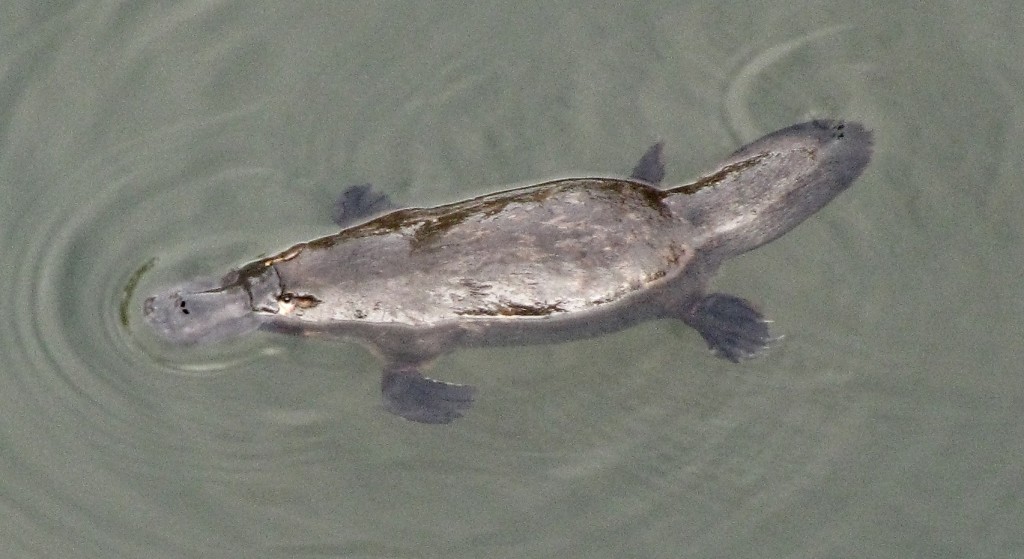
Platypus (© Vilis Nams)
The shape of a platypus in water looks surprisingly like that of a beaver. Both have lumpy bodies and broad, flattened tails, and both swim with webbed feet. However, the tail of a platypus is furred, rather than naked, and all four of its feet possess webbing between the toes to assist with swimming, whereas only the hind feet of a beaver are webbed. The most obvious and intriguing difference between these two aquatic mammals is the broad, grey bill of the platypus, which is covered with sensory receptors that allow the platypus to find its food of underwater invertebrates and small fish and amphibians.1 Whereas the beaver uses its chisel-like rodent teeth to gnaw down trees for food and engineering material, the adult platypus has no teeth at all.1 It gathers crustaceans and other foods with its leathery, pliable bill, stores them in cheek pouches, and later, while floating on the water surface, grinds them up between hard plates and ridges in its bill.1 Although considered a quintessentially Australian species, the platypus currently occurs only in the eastern fringe of the continent, from the rainforests of North Queensland south to the snowy highlands of the Australian Alps and Tasmania.2
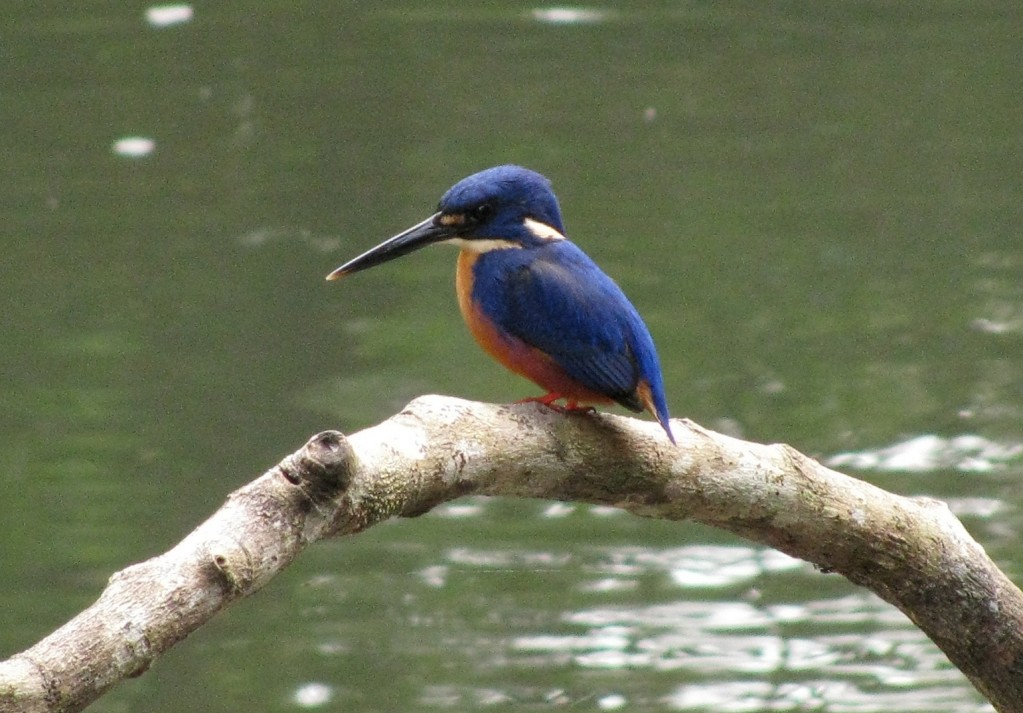
Azure Kingfisher (© Magi Nams)
While platypuses performed their rolling dives to forage in the river’s depths, pushed water into bow-waves while they swam, or floated motionless on the river surface with stubby legs splayed, azure kingfishers also hunted the river for prey. Possessing extraordinarily long beaks for such small birds, the kingfishers perched like cobalt and orange blossoms on bare branches at the river’s edge, one darting down to the water’s surface and plucking a silvery fish from the river with its beak. At only 12 to 19 centimetres in length, the azure kingfisher is the second smallest of Australia’s ten kingfisher species, 3 which also include both the laughing and blue-winged kookaburras.
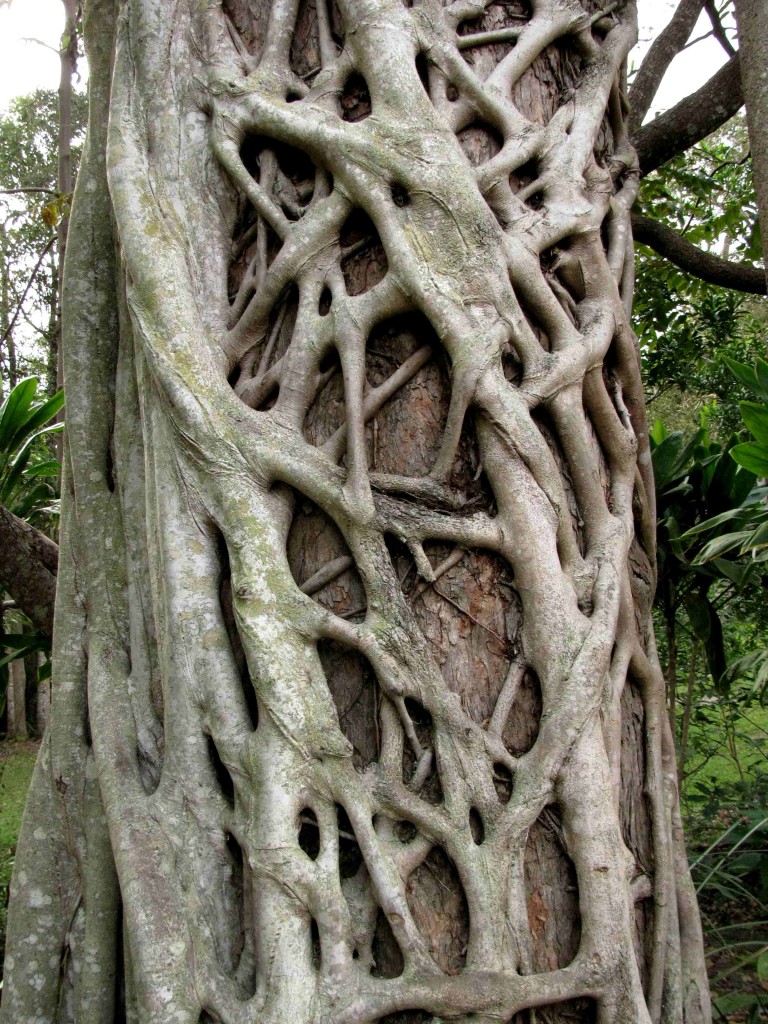
Strangler Fig at Broken River (© Vilis Nams)
…
Rich, damp smells pervaded the rainforest bordering the river, its upper level comprised of soaring trees – among them the Mackay tulip oak with its widely-buttressed trunk. Strangler figs ensnared tree trunks, and pinnate-leaved and fan-leaved palms, vines, and shrubs cluttered the forest understory. White-browed scrubwrens scuttled and chattered in the undergrowth, brush-turkeys scratched at leaf litter, and eastern whipbirds, which I have heard numerous times but never seen, whistled their ascending, whip-snap calls from every direction.
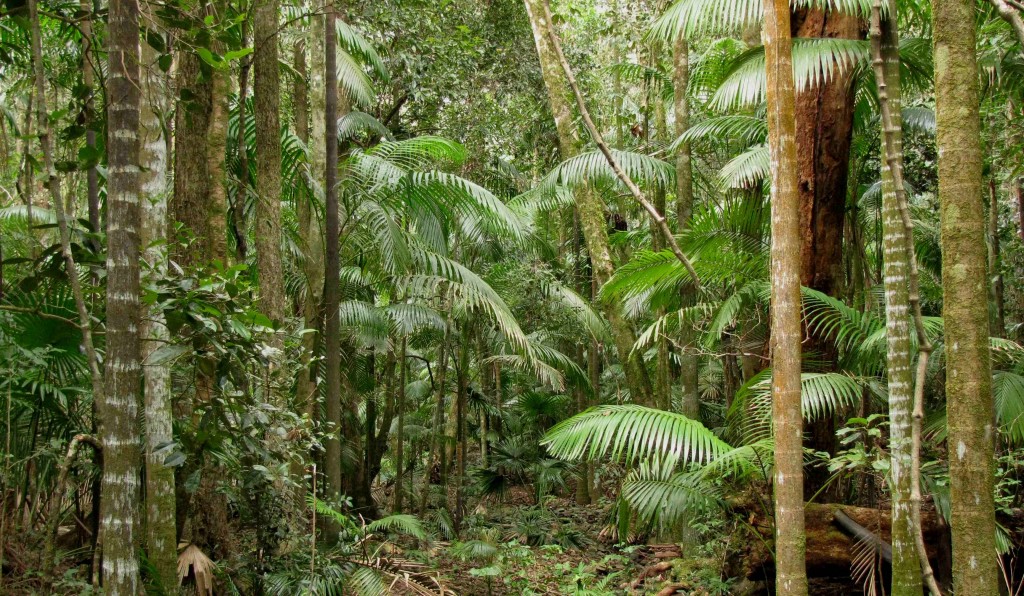
Eungella Rainforest (© Vilis Nams)
After leaving Broken River, we drove Diggings Road adjacent to the park into backcountry rangeland on rolling hills reminiscent of the Atherton Tablelands, but not possessing the lush, vividly green pastures characteristic of the wet tropics. Farm houses perched on hilltops, granting their owners sweeping views of the majestic, undulating landscape. If I was given a choice of locales to farm in Australia, I might choose this one, with the national park and its platypuses and rich rainforest next door.
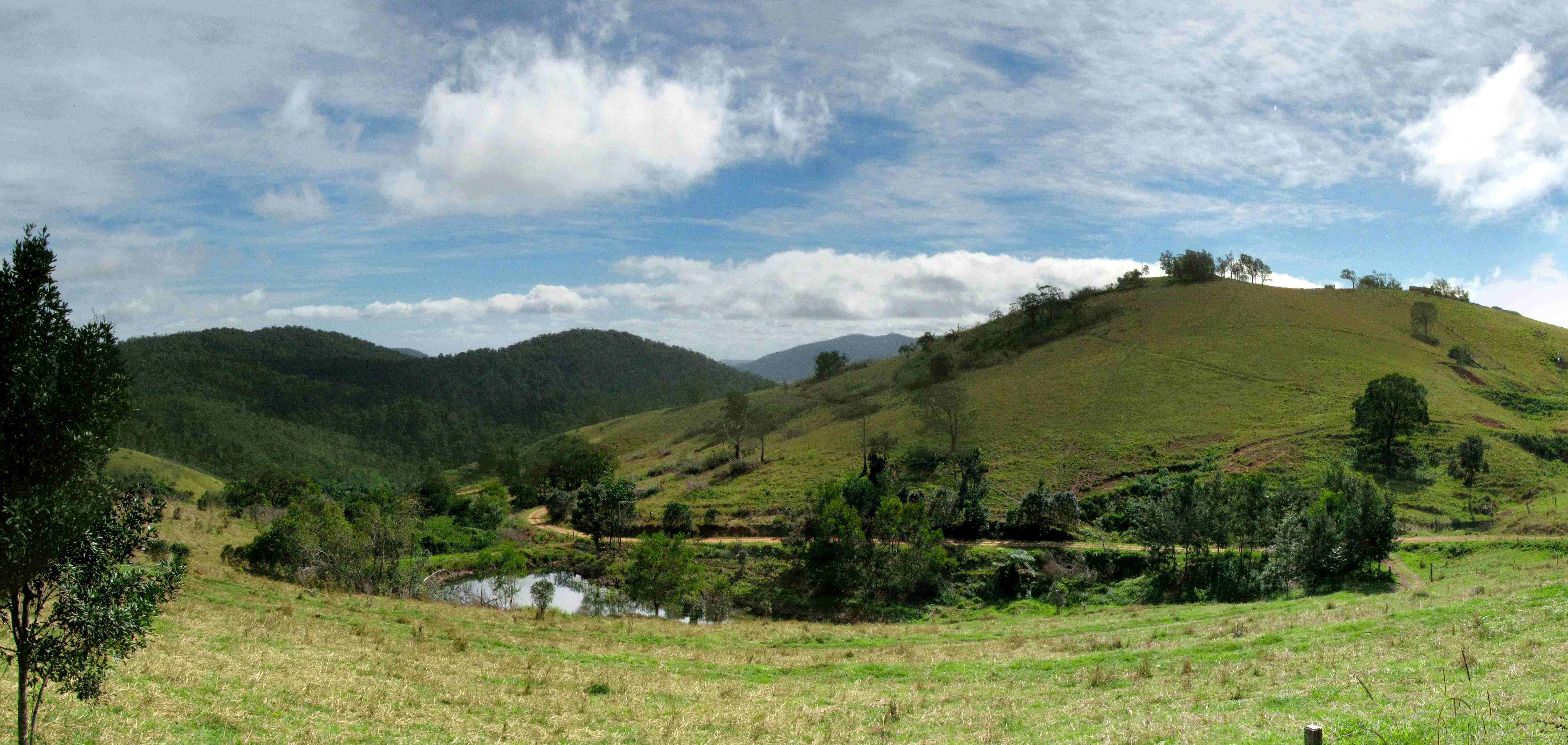
Backcountry Farm near Eungella National Park (© Vilis Nams)
With five hours of driving ahead of us, we headed down from the uplands of the park and its adjoining dairy and beef farms to the level, cane-dominated plain of Pioneer Valley. A brief side-trip to the Finch Hatton Gorge section of the park led us over narrow bitumen and dirt roads through cane fields hectic with harvesters as well as trucks and tractors hauling chopped sugarcane to cane railways paralleling and crossing the roads en route to sugar mills. As we neared the Gorge, the road dipped down again and again into concrete fords over streams that undoubtedly swelled into impassable floods during the Wet. I wondered how often residents living on the far side of the fords were cut off by flooding.
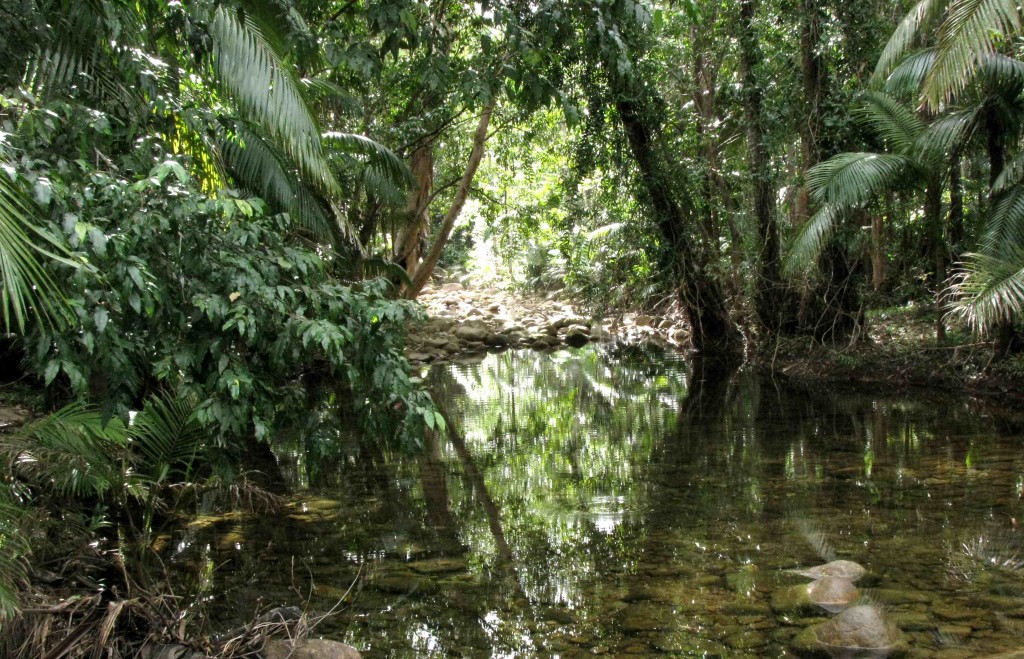
Rainforest Stream near Finch Hatton Gorge (© Magi Nams)
After a short hike through lowland rainforest already dimly lit in mid-afternoon, we drove out of Pioneer Valley and north on the Bruce Highway with sugarcane surrounding us. Trucks hauling cane churned up dust that pervaded the air with earthy scents. Smoke belching from sugar mills carried the fragrance of burnt sweetness. Rail cars filled with harvested cane stood on cane railways or rolled along behind bright yellow engines. A harvested field lay with its stubble scorched from burning. In the oncoming darkness, smoke billowed out over fields of cane, flames shooting orange light into grey smoke that sent fleets of fleeing insects smashing into our windshield.
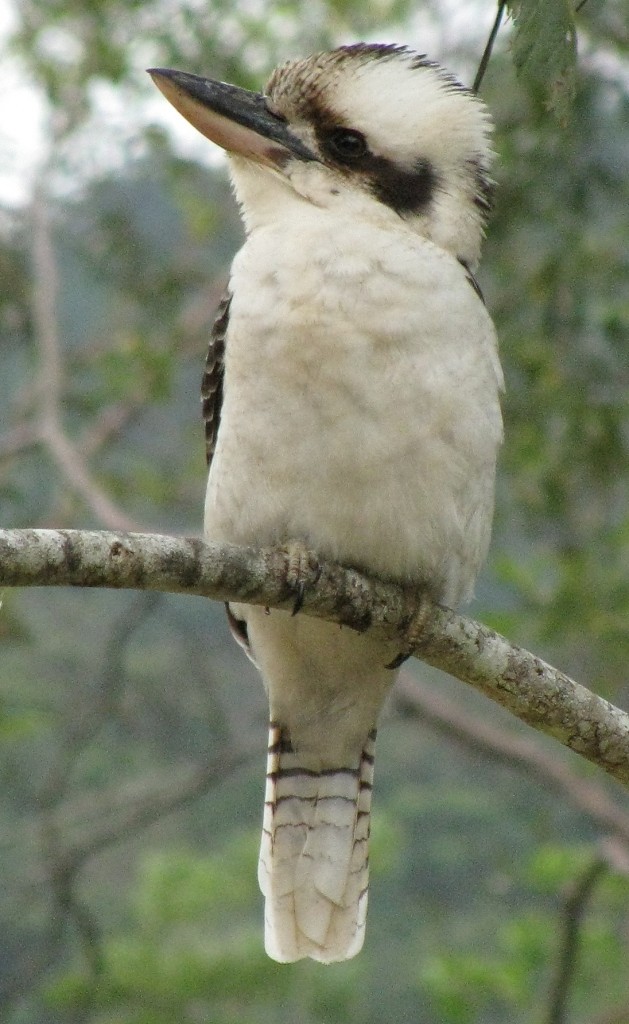
Laughing Kookaburra at Finch Hatton Gorge (© Vilis Nams)
References:
1. F.N. Carrick. Platypus. In: Ronald Strahan, editor. The Mammals of Australia. 1995. Reed New Holland, Sydney. p. 37; 2. Ibid, p. 36.
3. Graham Pizzey and Frank Knight. The Field Guide to the Birds of Australia. 1997. Angus & Robertson, Sydney. p. 316.
Today’s birds: little shrike-thrush, Australian brush-turkeys, Australian magpies, sulphur-crested cockatoos, Australian king parrots (m,f), azure kingfishers, laughing kookaburras, grey fantails, red-browed finches, *white-browed scrubwrens, pale-yellow robin, pied currawongs, rainbow lorikeets, scaly-breasted lorikeets, silvereyes, *brown thornbills, yellow-faced honeyeater, eastern yellow robin, dusky honeyeater, black-faced cuckoo-shrikes, Australian raven, brown gerygones, little pied cormorant, rufous fantail, galahs, magpie-larks, willie wagtail, peaceful doves, black kites, masked lapwings. (*denotes lifelist sighting) Also observed platypuses.

